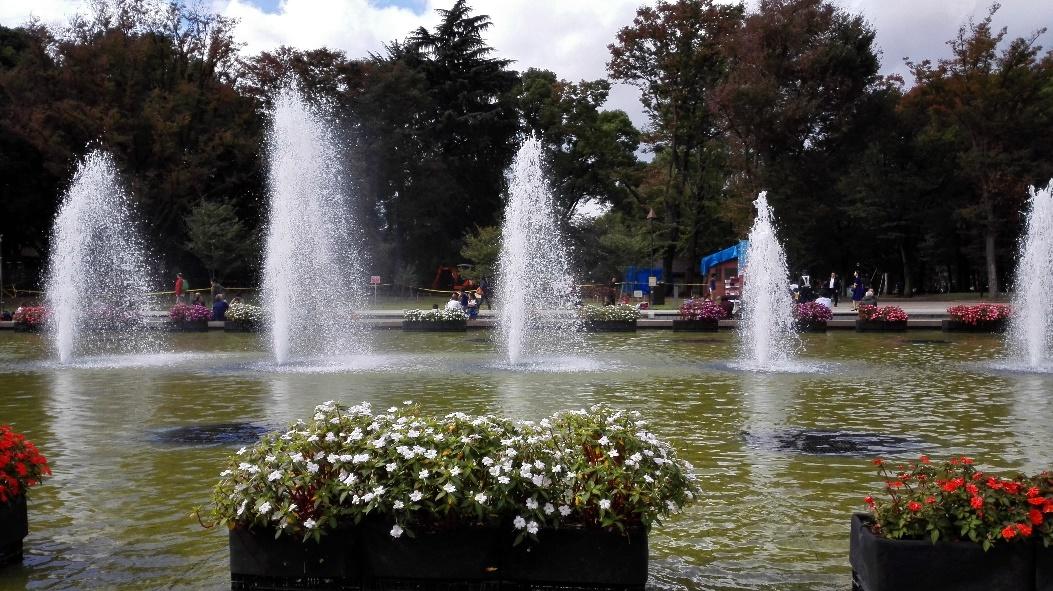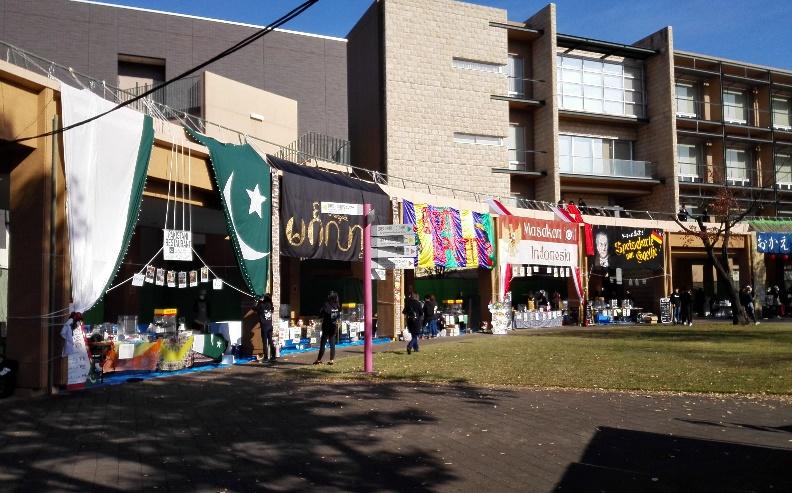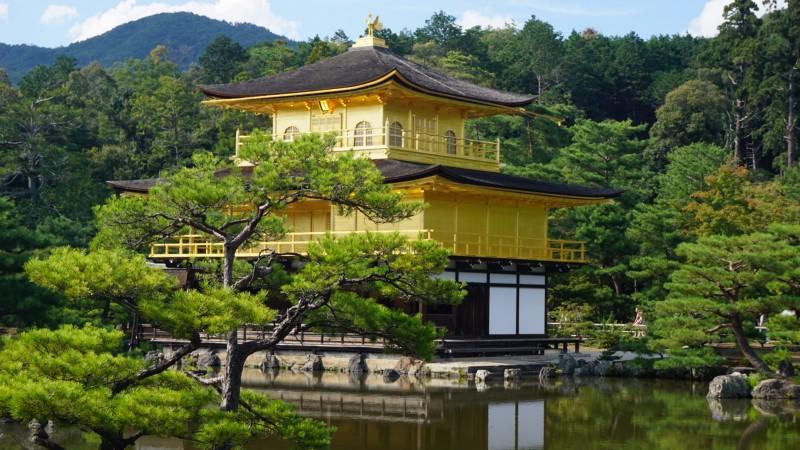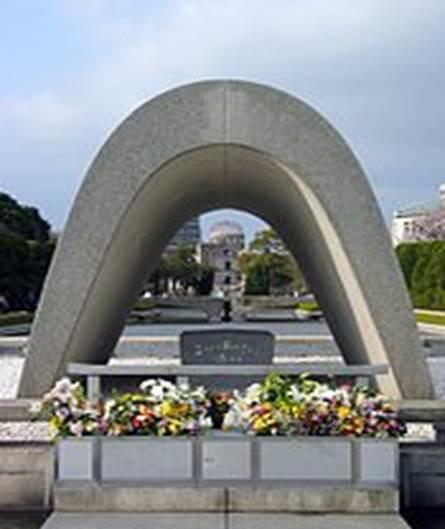NisaさんとMabuthoさんが日本を去る日が約1週間後に迫ってまいりました。そんななか、Nisaさんが日本滞在について振り返ってくださいました。初めての来日となったこの4か月の間、用務やプライベートで東京近郊、京都や広島を訪問したNisaさん。専門が歴史で、研究課題としている鉄道の歴史も含め、積極的に日本の文化や歴史に触れてくれました。しかしそのなかで、不便に思ったこともあったようです。それでは、南アフリカと日本の比較も興味深い、Nisaさんの日本滞在記をどうぞ。
In the autumn of 2018 the African Studies Centre of the Tokyo University of Foreign Studies (TUFS) hosted myself and a colleague from the University of Pretoria as visiting scholars for the fall term.
This would be my first visit to Japan and consequently a first-hand, in-depth encounter with the country, people and culture. Until this point my knowledge of the country, people and culture had been limited to Japan's historical role in WWII (and of course the dire outcomes of that role), that Akira Kurasawa was Japanese and that Japan was a technologically sophisticated society. I was also familiar with the global circulation of concepts such as samurai, kamikaze, geisha, and sushi.
Despite, or perhaps because of, these basic set of signs of Japan in the global imagination, I tried to dispel preconceived ideas as I wished to arrive in the country as scrubbed of expectations as possible. Given the cornucopia of myths, narratives and signs circulating on the internet it has been difficult to sustain a hermetically individualistic experience. Before long the internet had become an important resource to access, even superficially, the country, people, culture and the beautifully convoluted railway network system in Tokyo and beyond. Much of the recourse to the internet has been motivated by a relative inaccessibility of Japanese social and infrastructure networks.
Language is key to this inaccessibility. English is not widely spoken thus the non-Japanese speaker's inability to acquire an experience beyond the superficial. The prevalence of English-language signage in train stations, English-language announcements, local area maps, etc. notwithstanding, much of Tokyo as space and culture is a fragmented experience for the foreigner. This fragmentation is best symbolised by the train journey in and around Tokyo, with multiple stops and train changes in getting to parts of Tokyo served by the local, monorail and subway branch lines.
 Ueno Park
Ueno Park
Raymond Lucas in 'Getting Lost in Tokyo' (2008) describes the experience of exploring Tokyo by means of mapping his journey on the Tokyo subway. For Lucas, Tokyo is too vast and too complex to be grasped 'as a totality'. As a result, the sojourner can only render Tokyo in a set of vignettes, as episodic encounters between the explorer and different parts of the city. Visits to Tokyo locales such as Ueno, Yokohama, Shinjuku, Shibuya, Takao, Akihabara, amongst others, are singular episodes which require a planned itinerary, checking and double checking various branch and local lines and despite all preparations the probability of getting lost is high. Terminal hubs such as Shinjuku are crowded, loud and confusing. Two attempts to get to Odaiba remained unsuccessful due to confusion of branch lines and unfamiliarity of stops along the way, an absence of familiar markers to chart and navigate by. In the failure of both a planned itinerary as well as spontaneous venturing out, the vivid imagery provided by Lucas's description emphasises transience, fragmentation and instinct. For Lucas, it is way-finding best described as the 'actions of hunter-gatherers' rather than commuters in a modernised city. Much as hunter-gatherers read tracks, the Tokyo sojourner follows a complex set of signs, doubles back to make sure, moves forward, reads signs again, backtracks for certainty before moving onto the next set of signs and repeating the same process of checking, backtracking and moving forward.
One of the vignettes of a Tokyo sojourn is the experience of an institution such as TUFS. Compared to the University of Pretoria, TUFS is quite small with students in the thousands rather than tens of thousands. Small classes and extended teaching sessions are refreshingly different to what one is used to back at home where large classes and a mad dashing from lecture venue to lecture venue or main campus to satellite campus are more common experiences. The TUFS tempo is more sedate, measured, inducing a state of suspension, of being encapsulated in a time and space that is outside the norm and routine of Pretoria. The only routine possible to establish in a brief sojourn such as this one revolves around the life of the TUFS campus. Walking to campus, preparing for class, giving class, reading and writing punctuated by weekend forays into the vastness of the city becomes a brief but new norm.
Mobility is invigorating. Academic mobility, offered by this opportunity as visiting academic, has been particularly invigorating in several distinct ways. Firstly, the suspension of the routine of 'back home' is invigorating at an existential level. Freed from the demands of daily routine, the sojourner is able to shape an entirely new day, each day, with different habits, expressions and encounters limned by transience.
At the academic level, the invigoration is a more subtle experience yet deeply profound. Mobility acts as spur to renewed creativity. A new environment offers a different set of stimuli which are pristinely untainted by the concerns of 'back home'; the report waiting to be written, the students clamouring for marks and letters of recommendation, the faculty meeting, the latest excesses and scandals of the ruling party. Academic mobility provides a cocoon and the privilege of splendid isolation in short bursts.
On the level of teaching, academic mobility offers an opportunity to gain perspective on students and student life. Comparatively, Japanese students are no different to students back home. Some are incredibly hard working, others less so. Some are more committed than others, some more knowledgeable and curious than others. Some students are more vocal while others are more reticent. This perspective offers a justified and necessary corrective to one's view about students back home; they are not the dregs they often become, unfairly so, based on narrow experience. A significant difference between South African and Japanese students is the visible presence of a reading culture which translates as a higher level of academic engagement and proficiency. One of the tragic consequences of the South African past is the uneven spread of a reading culture which means that many South African students come from impoverished educational backgrounds in which a reading culture has not had time to plant deep roots. This frequently manifests as inadequate preparation for the increased tempo and demands of university, leading high failure and drop-out rates as well as extended years of study.
TUFS is a truly global institution in the composition of its student body. Students from East, South, Southeast and Central Asia share naan with students from Latin America; African students from various locations on the continent sip sake with students from Europe and the US with Japanese students frequently mediating as friends, interpreters and guides. One of the highlights of this visit was undoubtedly the TUFS Festival held in November. Over five days in the third week of November, TUFS students served foods from a variety of global regions and entertained with stage performances and plays, which included a memorable stage performance of the poet Kalidasa's epic, Shakuntala, performed in Hindi by Japanese students.
 Global cuisine at the TUFS Festival
Global cuisine at the TUFS Festival
The LETS programme at TUFS pairs students for conversational learning in different languages. By means of this programme I was partnered with a third-year Japanese student who wanted to improve her English while teaching me conversational Japanese. Our twice-weekly meetings were wide-ranging dialogues and exchanges on Japanese, Indian and African cultures, traditions and customs. These language and cultural exchange sessions were enriching for the deeper glimpse they offered into Japanese society and culture.
The academic culture of TUFS is stimulating and engaged. Regular academic seminars, film shows followed by discussions, visits by international scholars and regular academic exchanges between different universities contributes to an institutional culture rooted in scholarship. A significantly different, lightened, teaching load makes full participation in this academic life possible and stimulating. One of the highlights of this short stint at TUFS was the opportunity to present a seminar at Kyoto University, which also created the ideal opportunity for a brief tour of the city and some of its historic spaces. Less frenzied than Tokyo, Kyoto offers a different glimpse of Japan. While all Japanese seem to inhabit history with ease and confidence, Kyoto seems more energised on history than Tokyo, but on par with Hiroshima, though with significant qualitative differences. Kyoto's daily encounter and romance with its past is justified in light of its long and illustrious history as capital until the Meiji Restoration of the 1860s. In light of this Tokyo is often contrasted as the brash new-comer of insubstantial capital city pretensions.
 The Golden Pavilion/Golden Temple in Kyoto
The Golden Pavilion/Golden Temple in Kyoto
As with Kyoto, Hiroshima too is animated by its past. The difference between these two cities is that Kyoto's history is its cloak of pride while Hiroshima's history is it's envisioning of a different future for the city, country and world. This different future is one in which war, and in particular, nuclear war, has no place. Hiroshima's contradiction is the way in which its history keeps it grounded yet simultaneously animates the city's flight into the future. Hiroshima's history seems to be inscribed into the very concrete of its sidewalks, buildings and the marrow of its citizens who bear the past lightly but with reverence and awe. Nowhere is this awe and reverence more evident than in Hiroshima Peace Memorial Park. The Memorial Cenotaph, which holds the names of all the victims of the nuclear attack, draws Hiroshima residents on a daily basis to offer silent prayers for the repose of the dead. The Memorial Flame, first lit in 1964, burning since then and into the future until the threat of nuclear war is removed, is symbolic of the collective vision of Hiroshima residents, an end to nuclear weapons. This look to the future is contrasted by the wristwatch in the Museum displaying time frozen in the moment of attack on 6 August 1945: 8:15 a.m.
 The Hiroshima Memorial Cenotaph
The Hiroshima Memorial Cenotaph
Alain Resnais's 1959 film Hiroshima, Mon Amour, opens with extreme close-up shots of limbs which only become discernible as limbs once the camera zooms out slowly. The texture of these limbs in such extreme close up resembles atomic burns which the audience is only able to grasp at a later point when the film intercuts with images from the Museum. The bodies of a man and woman are entwined in passion. The disembodied voice-over is a dialogue between these two people, not in that moment but in some unspecified, disconnected moment. The woman insists on describing what she saw in Hiroshima. The man insists that she saw nothing, nothing exists in Hiroshima. The man is negating not only her sensual experience of Hiroshima, but in the process also negating Hiroshima. This opening sequence is an allegory on the destruction of Hiroshima in time and place as well as an allegory on its survival signified by the woman's insistence on rendering her experiences through description. Hiroshima has consistently refused negation and its destruction in the mid-twentieth century appears to have been the catalyst for reimaging a different Hiroshima. One of the most haunting sights of Hiroshima is that of trees that survived the nuclear blast; the Hibakujumoku, survivor or A-bombed trees. Subjectively, it is also one of the most beautiful aspects of Hiroshima. The beauty is both in the survivor trees producing new shoots and growth and in the way in which they are cared for by the city and its people. A gnarled and majestic camphor tree stands sentry by the riverside, branches held up by planks and splints but continuing to flourish.
Okonomiyaki is the regional dish of Hiroshima, vying for national attention with the Osaka variation. Okonomiyaki, literally meaning 'whatever you like' has a long history but it has come to occupy pride of place in Hiroshima cuisine because it symbolises the 'make do with whatever' attitude of Hiroshima residents. It is a pancake filled with cabbage and egg to which is added whatever one likes. In the food shortages of post-atom bomb destruction, the people of Hiroshima made do with whatever was available as food. Whatever was available was folded into the pancake, fried and topped with sauce. It is one more reminder of Hiroshima's history.

